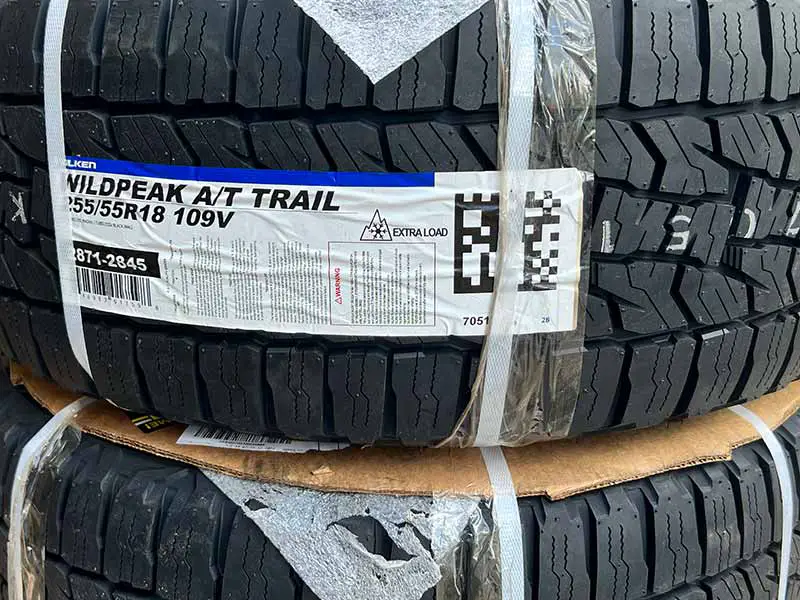Unfortunately, you can’t just go by how many miles you’ve put on a set of tires. That would make determining whether your tires are good or bad very easy. Bad tires can have zero miles on them, and good tires can have 100,000 miles on them and still have some life left.
Insufficient tread is the most common sign you need to purchase new tires, but how much tire wear is too much? Tread depth is just one of many warning signs.
How To Tell If You Need New Tires
- 2/32″ Tread Depth Or Less
- Tire Age Greater Than 6 Years
- Excessive Vibrations & Noise
- Damage Such As Bulges & Gouges
- Air Pressure Problems
- More Frequent ABS & Traction Warnings
Many warning signs will tell you that you need new tires, but it’s essential to understand each of them and when they need to be given your attention.
Let’s take a closer look.
1. Tread Depth
Treadwear is the main reason you may need to replace your tires. If your tire tread wear drops below 2/32″, you will need new tires since this is the legal minimum tread depth in most states.
We don’t recommend waiting until your tires have worn down to this level, though. The reason is primarily due to the much greater stopping distances on wet roads and the increased hydroplane risk.
4/32″ of remaining tread is the point we recommend you consider replacing your tires. The tread grooves at this level of tire wear are much better able to channel water out and away from underneath the contact patch of your tires.
Tires lose their ability to grip wet roads more rapidly as they approach the minimum legal tread depth. The wet weather performance lost between 4/32″ and 2/32″ is as much as the performance lost between a new tire and a tire worn down to 4/32″.
Tread Depth Gauge
The most accurate way to measure tread wear is with a depth gauge. These inexpensive tools make it simple to precisely measure the depth of your tire’s tread.
Most people won’t need a tread depth gauge, but it can be a helpful tool to keep in your glove box.
Penny Test
An excellent alternative to using a tread wear gauge is simply using a penny. The penny test is performed by placing a penny, with Lincoln’s head upside down, in the deep grooves of your tire’s tread and comparing the top of your tread blocks with where they line up with Lincoln’s head.
If all of Lincoln’s head is visible, you should replace your tires immediately. If his forehead remains completely visible, you should replace your tires soon. If any more of his head is obscured, your tires still have an acceptable amount of tread remaining.
Wear Bars
Wear bars are wear indicators molded into your tires by most tire manufacturers. These wear bars are at the bottom of the deep tread grooves and are made to a height of 2/32″. This corresponds with the legal minimum tread depth in most states.
When your tire treads wear down to where they are, even with the wear bars, you should replace your tires immediately.
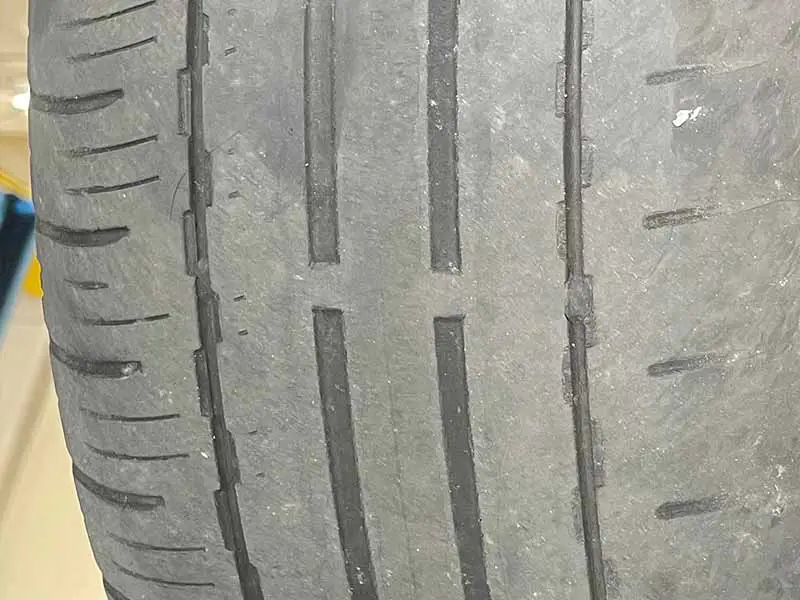
2. Tire Age & Cracking
Even tires that sit on a rack unused will eventually become unusable. If your tires have been mounted on your car or truck for six years or more, you should strongly consider replacing them, no matter their condition.
If you have tires in storage that have never been used, you shouldn’t use them if they are older than ten years.
Dry Rot
Over time, tires will dry rot. This means that the soft and flexible rubber used to make your tires will eventually become brittle and hard. When this happens, it is dangerous to use them because they will have lost a lot of their ability to grip the pavement and could suddenly blow out.
Tire manufacturers use chemical additives to help slow the aging of your tires, but six years of exposure to the sun’s ultraviolet rays and weather are about all a tire can take.
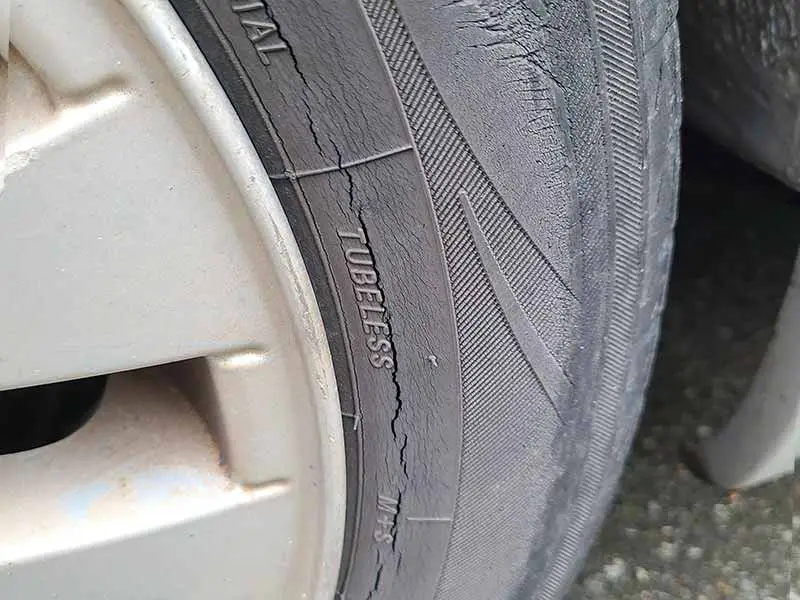
Tire Date Code
Tires sold in the United States have a Department Of Transportation Tire Identification Number on the sidewall. This code begins with the letters DOT and ends with the week and year the tire was manufactured.
For instance, if the code ends with a number like 2421, the tire was manufactured during the 24th week of 2021.
One important point to remember is that the complete tire identification number that includes the date is often only on one sidewall of the tire.
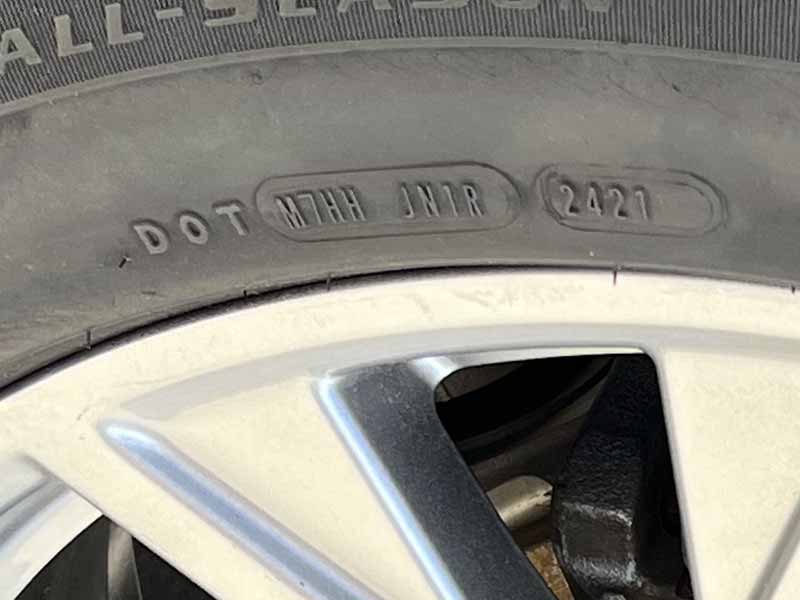
3. Vibrations & Noise
If you feel vibrations through the steering wheel or floorboard of your car or truck or hear excessive road noise that changes with your driving speed, this can be a sign of problems with your tires.
Vibrations and noise are not always signs that you should replace your tires, but these symptoms should be understood.
Uneven Tire Tread
Vibrations and noise are often caused by uneven tread wear. Uneven wear patterns can occur in many forms, and the sounds they create can vary quite a bit. Vibrations caused by uneven tread wear are more severe, while only a little extra road noise indicates a more mild tread wear problem.
If the worn treads from uneven wear have caused any portion of the tread to become worn down to the minimum depth, they should be replaced.
Your tires can wear unevenly for many reasons. It’s important to diagnose the cause of the uneven tire tread wear before you purchase new tires. If you don’t solve the cause of the wear problem, you’ll end up with the same problem as with the old tires, and their life will be much shorter.

Foreign Object Puncture
A common source of sudden tire noise or vibrations is a puncture that has left a foreign object stuck in the tire tread. These punctures usually don’t cause the tire pressure monitoring system to report a low tire pressure warning since they often seal tightly enough to hold the air pressure for a while.
The noise or vibrations from the object repeatedly hit the pavement as the tire spins. Nails and screws are common but usually don’t create much noise or vibration. Larger and more unusual objects tend to be more noticeable.
Punctures don’t always mean your tire will need to be replaced. But punctures too close to the sidewall or too large to be patched or plugged will mean you need new tires.
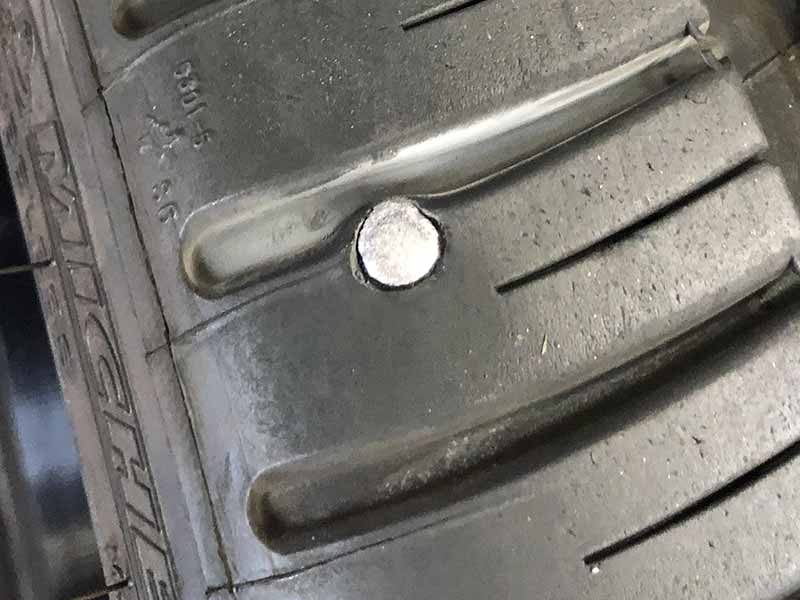
Balance Problems
When your wheel and tire are not properly balanced, they will bounce up and down slightly as you drive. Depending on the amount they are out of balance, the vibration or noise can be barely noticeable or quite severe.
Balance problems aren’t usually a sign that you need new tires, but they can be. Out-of-balance wheels and tires are often due to a bent wheel or lost wheel weight.
Sometimes the problem is damage to the tire itself from potholes or curb strikes. Steel belts and synthetic fabrics maintain the internal structure of your tires. If these break or the layers separate, the tire can lose its round shape. If this is the source of the balance problem, it can’t be fixed, and you’ll need a new tire.
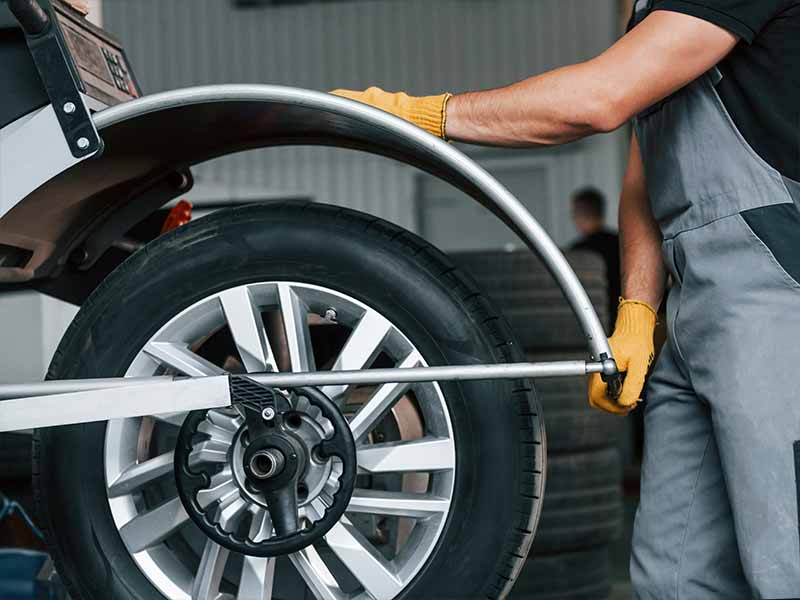
4. Bulges & Gouges
Gouges and gashes in your tire tread or sidewall usually mean you should replace the tire unless the damage is purely cosmetic. To determine whether the tire is damaged enough to require replacing, you’ll want to have a tire professional inspect it.
Bulges are always signs of internal structural damage to the tire and will require it to be replaced. Potholes and curb strikes are the common sources of this type of damage. The most common type of bulge we see is a sidewall bulge.
These internal structural failures will only get worse over time as you drive. They will eventually lead to a complete failure of the tire. You want to avoid this, so replacing the tire immediately is the best course of action.
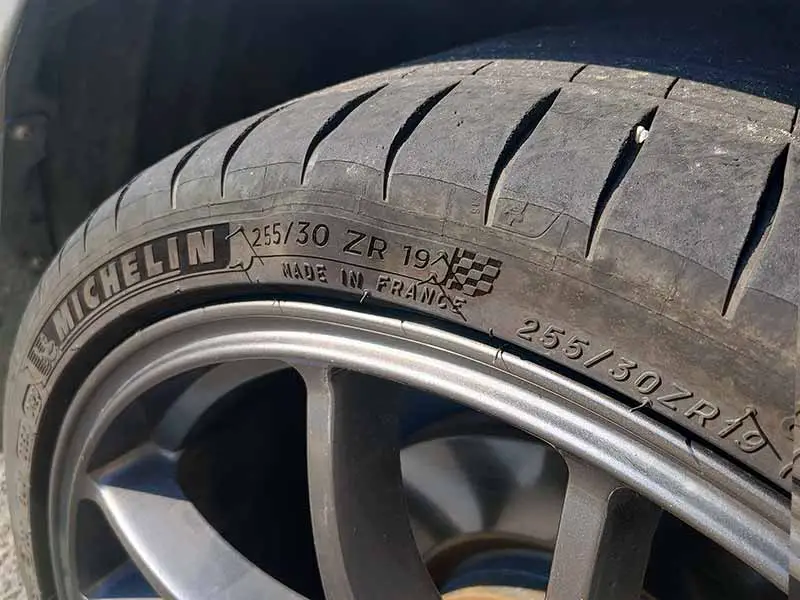
5. Air Pressure Problems
Losing air pressure over time happens normally. It’s common to lose one psi per month. Tires will also drop in pressure when the outside temperatures drop.
If your tire cannot hold adequate air pressure over a few days or weeks, you may have a slow leak that can be fixed, or there may be some damage to the tire that can’t be patched.
If this is your situation, have a tire professional check out your tire to identify the leak’s source and see if it can be fixed. If not, you may need to purchase a replacement tire.

6. ABS & Traction Warnings
Anti-lock braking and traction control systems have no doubt significantly reduced the chance that we’ll have an accident, but they can only work with the circumstances they’re given.
Electronic stability systems can maximize the traction your tires have. Still, if there is precious little tread left, you’ll begin to notice the ABS and traction control lights on your dashboard coming on more frequently in rainy weather conditions.
If you’re experiencing more slipping and sliding in adverse weather conditions, it could be time to purchase a new set of tires.
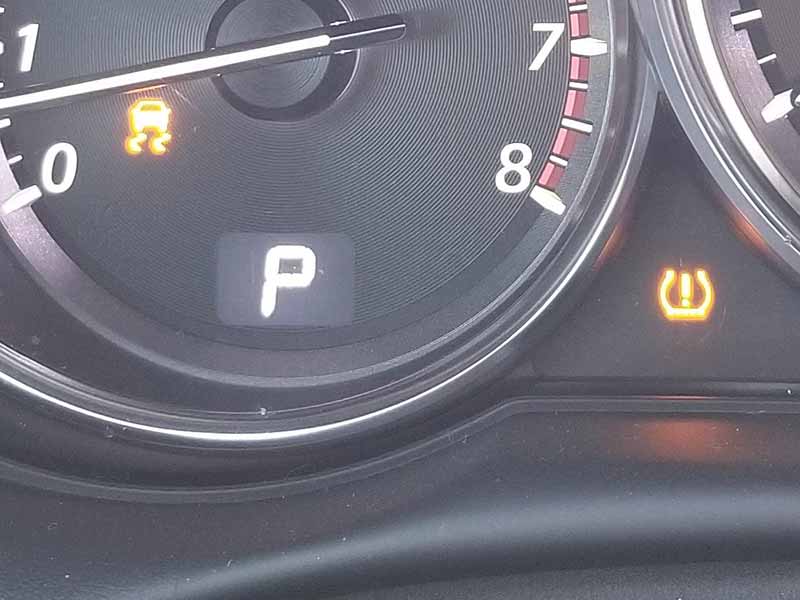
Resources
Below are some links you may find helpful when learning about tires
Final Thoughts
Good tires are essential, especially in an emergency situation. They are arguably the most important component of your car or truck. The only part that comes in contact with the road, ideally.
Keep an eye out for these warning signs of bad tires, and you’ll know when you need new tires and when you can save a few dollars and put a few more miles on the ones you have.
Good luck and happy motoring.
